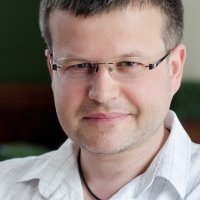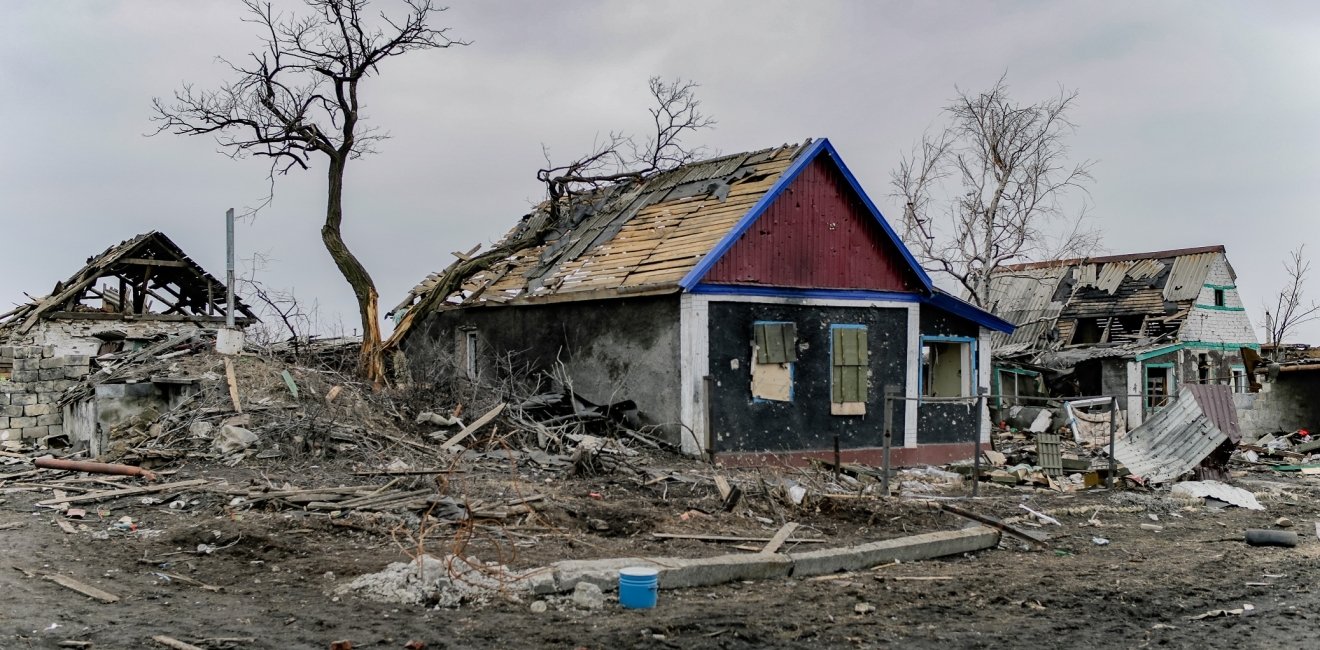
A blog of the Kennan Institute
BY TETYANA MALYARENKO AND BORYS KORMYCH
The quick withdrawal of the Russian armed forces from the outskirts of Kyiv has revealed the true face of the Russian style of warfare. One of the manifestations of this style is a massacre of civilians by Russian soldiers. The Bucha massacre was the first, but unfortunately will not be the last, instance in a series of war crimes committed by Russian soldiers in Ukraine.
While the international community has been shocked by the barbarism of the Russian army, the methods of governing the self-proclaimed republics of the DPR and LPR, and especially the methods of suppressing dissent, do not differ much from what we observe in Kherson, Melitopol, or the suburbs of Kyiv. Nevertheless, the dirty work of political repression of pro-Ukrainian activists in Donetsk and Luhansk since 2014 has been delegated to pro-Russian proxies, such as militants and mercenaries, which has allowed Russia to use its famous excuse, “We weren’t there.” As for the massacres in Bucha and other towns near Kyiv, there is already ample evidence that the regular Russian army carried out these war crimes.
The position of the Russian Federation is very indicative in this respect. On the one hand, the government of the Russian Federation clumsily denies the facts of the war crimes conducted by Russian soldiers, claiming either that there were no killings at all, or that the killings were carried out by Ukrainian soldiers, or that the killings were a staged performance by trained actors. A similar obfuscation PR tactic was used by Kremlin spokespersons and the government-controlled media to avoid responsibility for the downing of flight MH-17 in July 2014.
On the other hand, the "denazification" of the Ukrainian nation—one of the main goals of Russia's military campaign in Ukraine—finds its explanation in the speeches of government officials and government media publications. Dmitry Medvedev has explained the idea of denazification on his Telegram channel, arguing that “Ukrainian identity is fake” and that the liquidation of Ukrainian identity will occur “not only on the battlefields.”
The Russian state-owned news agency RIA Novosti in the article “What Russia Should Do with Ukraine” further explained that “denazification will inevitably also be a de-Ukrainization,” in other words, the military occupation of Ukraine by Russia, political repression of broad social groups, and the crude deprivation of people’s political, social, and cultural rights—or what Ukraine’s president Volodymyr Zelensky called “colonization and enslavement” in his speech to the UN Security Council.
Taking all the above together, we can identify four behavioral tactics Russia has used in the occupied territories of Ukraine, depending on the loyalty of the civilian population.
First, the massacre of civilians is a tactic intended to instill fear and one the Russian army has already implemented on the outskirts of Kyiv.
The second tactic, related to the first, is expulsion of the population from the occupied territories. The brazen failure to hide the traces of their atrocities during the retreat in the Kyiv region and the systematic shelling of cities not directly targeted for takeover, as happened in Kharkiv, may be interpreted as efforts by the Kremlin to force Ukrainians to leave their habitations through the use of terror.
Third, attempts to force assimilation (which is partly grounded in the second tactic as it relates to pro-Ukrainian activists) are now taking place in the newly occupied territories of the Kherson, Zaporizhzhia, Lugansk, and Donetsk oblasts. According to experts, Russia is entrenching itself in those regions, preparing for a long-term occupation. Russia has initiated several measures designed for rapid assimilation, including broadcasting Russian TV channels, resuming classes in Russian-language schools using specially imported Russian textbooks, and destroying Ukrainian books in schools and libraries. The local population, suffering from hunger and lack of medicine and money, is already receiving humanitarian aid from Russian convoys, while humanitarian aid from Ukraine and international organizations is blocked by Russian soldiers.
The fourth tactic, the deployment of local conscripts as “cannon fodder,” is being implemented in the territories of the LPR and DPR, where, since the beginning of February 2022, all men aged eighteen to fifty-five years are subject to mandatory military mobilization; these forces are subsequently rushed to the front lines to attack the positions of the Ukrainian army.
These four tactics constitute a playbook used by the Kremlin to “liquidate” the Ukrainian nation itself. At the same time, contemporary international legal mechanisms cannot prevent their implementation, which encourages the Russian army in Ukraine to continue its monstrous, demonstrable war crimes.
The system of international organizations and international law, especially as applied to preventing international conflicts and war crimes, needs to be reformed. But this is a long-term prospect. In the short term, the “thin red line" of the Ukrainian army holding back the advance of Russian troops is the only effective tool to protect Ukrainians.
In the upcoming big battle for eastern Ukraine, it is critically important that the Ukrainian army obtain heavy weapons that would help it defeat the Russian army and liberate the population of the occupied territories, which is suffering under the yoke of repression and violence.
The opinions expressed in this article are those solely of the authors and do not reflect the views of the Kennan Institute.
Authors



Kennan Institute
The Kennan Institute is the premier US center for advanced research on Eurasia and the oldest and largest regional program at the Woodrow Wilson International Center for Scholars. The Kennan Institute is committed to improving American understanding of Russia, Ukraine, Central Asia, the South Caucasus, and the surrounding region through research and exchange. Read more

Explore More in Focus Ukraine
Browse Focus Ukraine
Talking to the Dead to Heal the Living

Ukrainian Issue in Polish Elections


